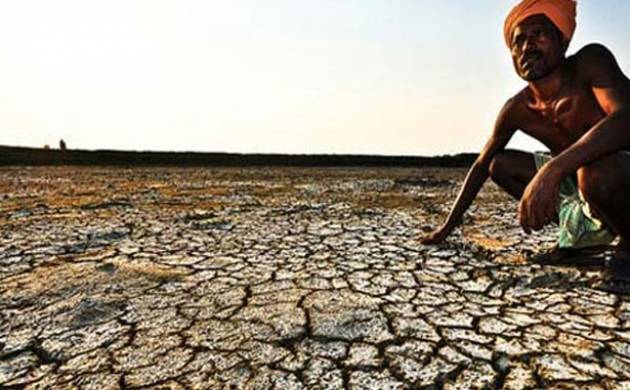Drought, is not a new experience for the farmers of Maharashtra. These poor grain-makers on whom depends the sustenance of entire cities, have often gone hungry, starving as they face the cruel judgements of the Rain gods. If being kicked by Nature wasn’t enough, they have also been trampled upon by man-made disasters and government ignorance while the water – and their fate – has steadily run out, fading from the world, leaving a parched memory behind.

Indeed, these farmers, the custodians of India’s agrarian community, have always been the first ones to suffer in cases of severe drought, and unlike the major urban cities, which always get aid, being the home of numerous political, industrial and other bigwigs, the farmers have always faced the very real threat of looming death – a threat which has not only encompassed entire families in the past, but even entire communities.
Numerous plans and government yojnas had been discussed and were supposed to be implemented by 2012, which would save the lives of farmers and provide sustenance in case of such droughts, but these never came into existence, and the money has been siphoned off to who knows which pockets, leaving these poor farmers and their families high and dry.
One of the major reasons for drought has been the changing climatic conditions, a domino effect of Global Warming. Earlier, Maharashtra used to get 4 and more months of steady rainfall, which would be beneficial for farmers and the crops as the rain would be distributed evenly over a large period of time, and it would be present for all the crucial growth stages of the crop. But in recent years, the State has received heavy but intermittent showers of rain, which has resulted in a lot of crops dying out as they haven’t received much needed water during the all-important stages of their growth.
This situation has been made worse by the man-made problem of over irrigation. Sugar and sugarcane industrialists have used a lot of money to create massive irrigation systems to supply water to their sugarcane plantations – a crop which accounts for only some 9% of the State’s crop supply, but uses three to four times as much water for its sustenance. However since it has good value in the market and is used to create sugar and jaggery and for a plethora of further uses, the plantation owners have continued growing this plant at the expense of others, which has ultimately resulted in the water crisis. Avarice has truly become a deadly sin.
To combat this, the government and unions should first keep a check on the sugarcane production in the State and limit the supply of water to those plantations. Further, the farmers should be educated about other methods of agriculture which may use less water, taught about crops which can be grown without much water and can be sold for profits, about 0 budget farming, and planting complementary crops year round.
Along with this, for now the government should make sure to supply water to these farmers through tankers and make sure they survive while long term solutions such as artificial canals and rivers can be created and connected to huge water supplies to aid the coming generations. A combination of short and long term solutions is the way ahead if this water crisis has to be dealt with, lest we end up creating an arid desert of our beautiful Maharashtra.
































we have to find new sources. one could be treated sewage for irrigation. the problem is mixing of chemical effluents in sewage. this makes water unusable.
solution is to put up small treatment plants particularly in institutes and use treated water for irrigation